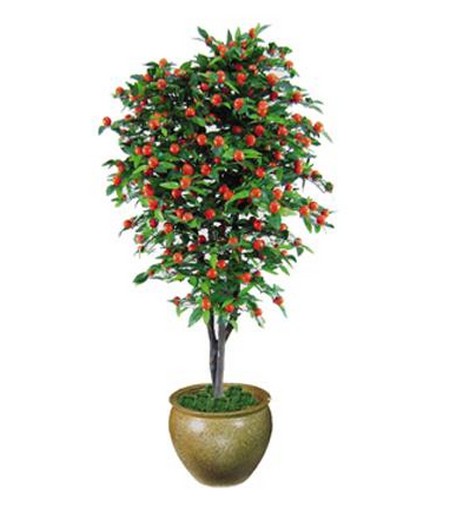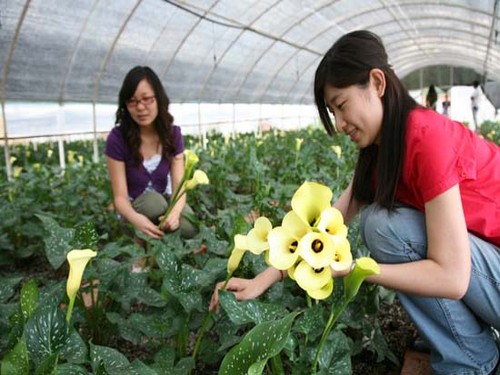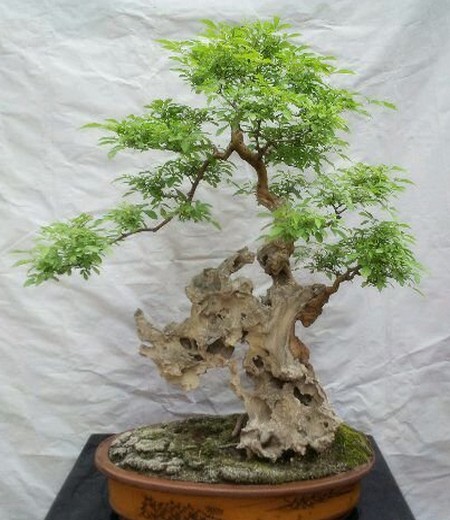Pruning method of kumquat bonsai
There is a big difference in cultivation methods between potted kumquat and garden kumquat, and the pruning method also has its own characteristics. After March, most of the fruits of kumquat fell off naturally, and the remaining fruits were picked manually to save nutrients. At the same time, dense branches, cross branches, some overgrown branches and no light branches were removed. The retained one-year-old branches were heavily truncated, leaving 2-3 buds for each branch and outer buds for cutting buds, so as to make the crown open, ventilated and transparent.

In the flowering and fruit stage, pay attention to thinning flowers and fruits, keep the flowers blooming first, and get rid of late flowers and weak flowers. Generally speaking, the fruit rate of flower pedestal from May to June is higher than that of pick, so it should be retained more. Get rid of the flowers and fruits after July.
(1) the basic pruning method of potted kumquat: the basic pruning method also adopts truncation, sprouting and thinning and so on. Truncation is to solve the problems caused by its natural growth, such as unclear main branch, weak skeleton, disorderly crown and so on. The life span of potted kumquat leaves is only 1-1.5 years, which is shorter than that of orchard-grown kumquat leaves. Short-cut kumquat leaves can continuously promote new shoots and maintain a certain number of new leaves, so as to avoid the inner chamber of old branches being empty. There are many and dense branches at the tip of the new shoot, and the dense branches at the short end can make the shoot strong, the crown compact and round, and it is not easy to sag.
Through the weak tree, weak branch heavy short cut and strong tree, strong branch light pruning, "suppressing the strong and helping the weak", we can adjust the tree situation. By cutting (cutting) the buds to orientate and culture the shoots, it can fill in the gaps.
The degree of short cut can be divided into two kinds: heavy short cut and light short cut. The short cut before sprouting in spring can cultivate skeleton branches and promote strong shoots. Sometimes in order to cultivate a strong main branch, it can be re-cut to the branch of the previous year or the year before last. The top of the branch is cut off only a few nodes at the top of the branch, which is mainly used to promote the growth of the new shoot in the same year.
Sprouting should be carried out as soon as possible. If the shoots have been drawn and the branches grow too long, attention should be paid to protecting the compound buds at the base so as not to affect the germination. Thinning pruning is used for thinning and deleting dense branches, cutting off dead branches and diseased branches to make the crown branches distribute reasonably and evenly, and thinning pruning is also used for the treatment of apprentice long branches to balance the tree potential.
(2) pruning: it can be divided into seedling pruning and fruiting tree pruning.
1. Pruning at seedling stage: this is to cultivate skeleton branches to form a crown. The grafted seedling leaves about 10 cm heavy pruning after the first shoot maturing to cultivate the main branch. After the main branch is mature, it should be pruned again before the new shoots are drawn, so as to promote the growth of new shoots. While pruning, it is necessary to strengthen the management of fertilizer and water, and strive to shoot many times in the same year. For the last time, the autumn tip should be made neat. After pruning, it can bear fruit in the second or third year.
2. Fruit tree pruning: from spring to autumn, fruiting branches can be produced continuously in each leaf axil, that is, fruiting mother branches can grow in the same year, flower buds can be formed in the same year, and blossom and bear fruit in the same year. In order to ripen the fruit of potted kumquat during the Spring Festival for fruit appreciation, it must be made to grow summer shoots and form flower buds from late May to early June, and blossom and bear fruit in the same year.
In order to make the summer tips timely and neatly, it is usually necessary to trim 3 times. The first spring shoot was cut short on the secondary and tertiary branches before germination, leaving 10-20 cm to promote the emergence of a large number of robust spring shoots. Pruning should be carried out between Rain Water and sting. The second pruning is about 60 days after the first shoot germination, that is, when the spring shoot is basically ripe, cutting 15cm to 20cm. The third pruning is about 50 days after the second branch pruning, and the top of the secondary shoot is trimmed slightly to promote it to produce neat summer and autumn shoots to expand the crown.
Time: 2019-06-12 Click:
- Prev

Propagation technique of potted calla
Colored calla lilies are now usually sold as single pots or pots of high-grade potted flowers. if the technical problems are solved, colored calla lilies still have some room for development in the small potted market in the future. Jinzhou ball has the advantages of many flowers and strong disease resistance, so it is more suitable for producing small potted products with a pot diameter of 12 cm to 14 cm.
- Next

Modeling method of Bauhinia bonsai
Vitex negundo, that is, Vitex negundo, is widely distributed in China and has strong vitality. It is one of the commonly used miscellaneous tree species for bonsai production. Its adaptability is very strong, and the requirements for soil are not strict. Potted bauhinia is better with humus soil with loose texture and good water permeability, and the pot pot is suitable for soil basin or cement pot. Before planting
Related
- Fuxing push coffee new agricultural production and marketing class: lack of small-scale processing plants
- Jujube rice field leisure farm deep ploughing Yilan for five years to create a space for organic food and play
- Nongyu Farm-A trial of organic papaya for brave women with advanced technology
- Four points for attention in the prevention and control of diseases and insect pests of edible fungi
- How to add nutrient solution to Edible Fungi
- Is there any good way to control edible fungus mites?
- Open Inoculation Technology of Edible Fungi
- Is there any clever way to use fertilizer for edible fungus in winter?
- What agents are used to kill the pathogens of edible fungi in the mushroom shed?
- Rapid drying of Edible Fungi

